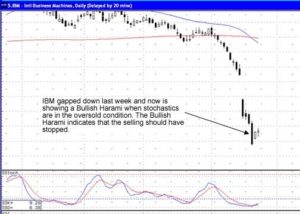Trading stock options is very different from trading stocks. The main difference is that stocks give investors a small piece of ownership in the company, and options are contracts that give investors the right to buy stock or sell stock at a specific price by a specific date. When trading options, there are always two sides for every transaction that take place, including the buyer and the seller. This means that for every call or put option that is purchased, there is always another person selling it. When trading stock options, there are three choices for each investor. The investors can trade options, exercise the options and buy or sell the underlying security, or investors can use options as a hedge against a loss.
This article discusses how to do all of the above. First, when trading stock options the investor must understand that there are two pieces of information to take into consideration. It is important to understand that the price of the underlying stock directly affects the price of the option, therefore moving it up or down. It is also important to understand that the amount of time remaining on the option affects the price, meaning that as time runs out, the option becomes less attractive. For many investors, trading stock options means never taking possession of the underlying security. It is important to note as well that supply and demand also affect the option price.
When exercising the option, this means that the investor can take possession of or sell stock at the fixed price of the option without regard for the current market price of the stock. The investor must be sure to exercise that option before it expires, when options trading. Lastly, trading stock options as a hedge, allows the investor to use options as insurance against a loss if the investor if worried about a stock price dropping.
The other option to hedging is to implement a stop-loss order with your broker so that you can sell the stock if it falls below a certain point. Trading stock options is seen by investors as a very risky way to make money. It can be tricky because even those stocks that seem to continue to rise very quickly can suddenly drop. That being said, there is always the possibility of total loss, when simply stock trading. The important lesson to learn is that you must educate yourself and know that you will lose from time to time. Many investors suggest that you should only plan to lose money that you can afford to lose.
They suggest that if you can lose only 20% of you account at a time when trading stock options, then you should use no more than 20% of your account on any single stock options trade. Like all types of investing you must proceed with caution if you are a beginner. Trading stock options is a very complicated form of investing and is one that you can lose your money in very quickly if you don’t know what you are doing. Good investing, The Candlestick Forum Team

